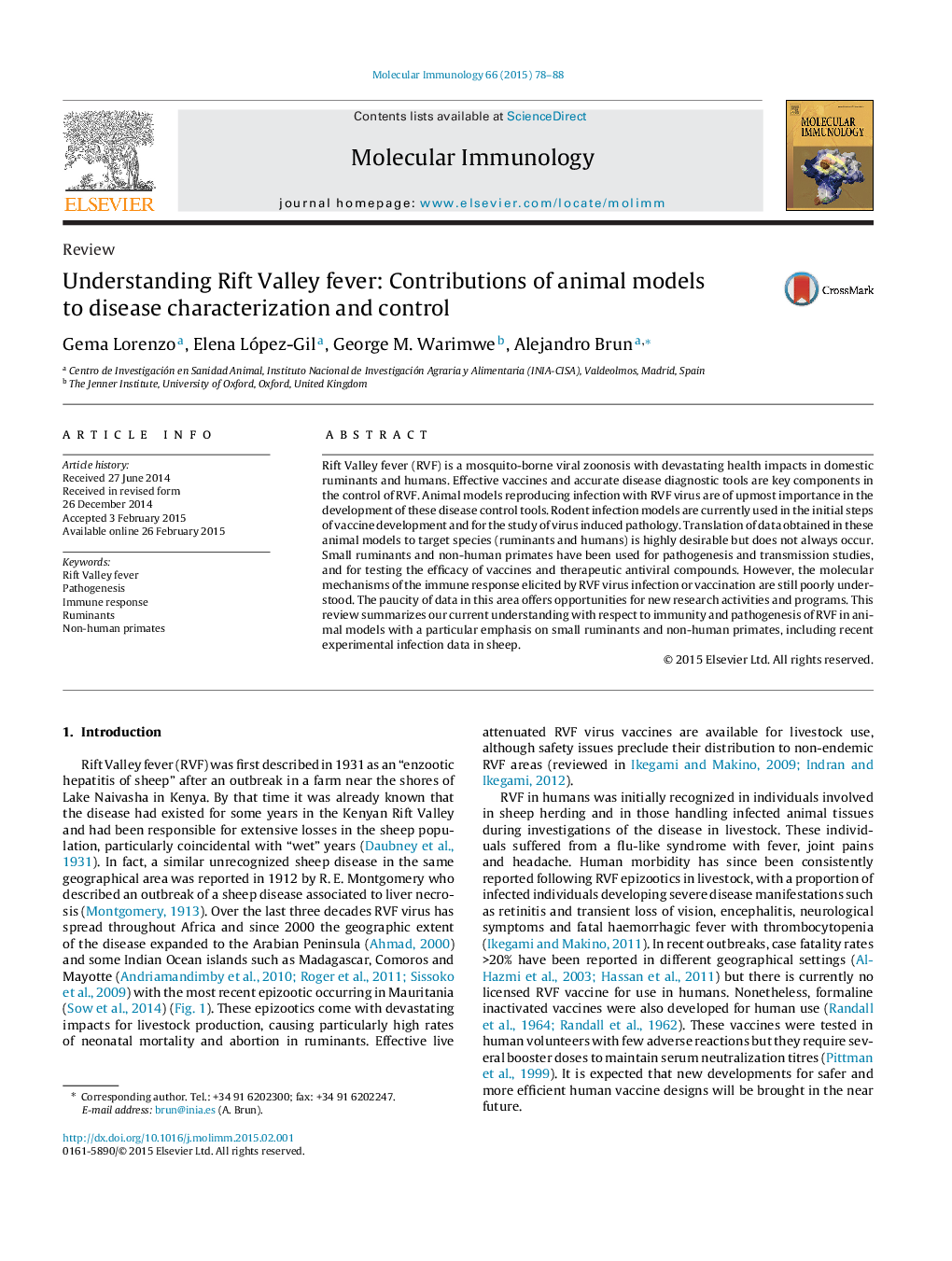| کد مقاله | کد نشریه | سال انتشار | مقاله انگلیسی | نسخه تمام متن |
|---|---|---|---|---|
| 5916751 | 1163755 | 2015 | 11 صفحه PDF | دانلود رایگان |
عنوان انگلیسی مقاله ISI
Understanding Rift Valley fever: Contributions of animal models to disease characterization and control
ترجمه فارسی عنوان
درک تب های دره ریفت: مشارکت مدل های حیوانی برای مشخص کردن و کنترل بیماری ها
دانلود مقاله + سفارش ترجمه
دانلود مقاله ISI انگلیسی
رایگان برای ایرانیان
کلمات کلیدی
تب ریفت دره، پاتوژنز، پاسخ ایمنی، مجاری پریماه غیر انسانی،
موضوعات مرتبط
علوم زیستی و بیوفناوری
بیوشیمی، ژنتیک و زیست شناسی مولکولی
زیست شناسی مولکولی
چکیده انگلیسی
Rift Valley fever (RVF) is a mosquito-borne viral zoonosis with devastating health impacts in domestic ruminants and humans. Effective vaccines and accurate disease diagnostic tools are key components in the control of RVF. Animal models reproducing infection with RVF virus are of upmost importance in the development of these disease control tools. Rodent infection models are currently used in the initial steps of vaccine development and for the study of virus induced pathology. Translation of data obtained in these animal models to target species (ruminants and humans) is highly desirable but does not always occur. Small ruminants and non-human primates have been used for pathogenesis and transmission studies, and for testing the efficacy of vaccines and therapeutic antiviral compounds. However, the molecular mechanisms of the immune response elicited by RVF virus infection or vaccination are still poorly understood. The paucity of data in this area offers opportunities for new research activities and programs. This review summarizes our current understanding with respect to immunity and pathogenesis of RVF in animal models with a particular emphasis on small ruminants and non-human primates, including recent experimental infection data in sheep.
ناشر
Database: Elsevier - ScienceDirect (ساینس دایرکت)
Journal: Molecular Immunology - Volume 66, Issue 1, July 2015, Pages 78-88
Journal: Molecular Immunology - Volume 66, Issue 1, July 2015, Pages 78-88
نویسندگان
Gema Lorenzo, Elena López-Gil, George M. Warimwe, Alejandro Brun,
